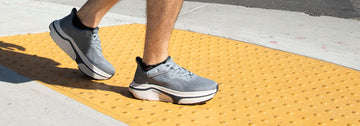How to Keep Walking with MS Related Foot Drop


Posted by:
Johannes Sauer
Reviewed by:
Updated at: October 01, 2024
CHECK OUT THE LATEST IN ADAPTIVE FOOTWEAR...
FAQ
Can you explain what MS-related foot drop is and what causes it?
What are common symptoms of foot drop in those with multiple sclerosis?
How does MS gait differ from a normal walking pattern?
In what ways does fatigue impact foot drop in MS patients?




![[color: black] Original Men's Adaptive Shoe](http://cadense.com/cdn/shop/files/Mens-BLK-T1-LG.jpg?crop=center&height=300&v=1765338442&width=300)
![[color: white] Original Women's Adaptive Shoe](http://cadense.com/cdn/shop/files/Womens-WHT-T1-LG.jpg?crop=center&height=300&v=1765381322&width=300)





